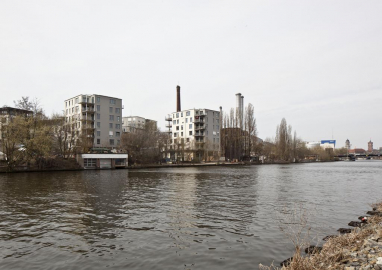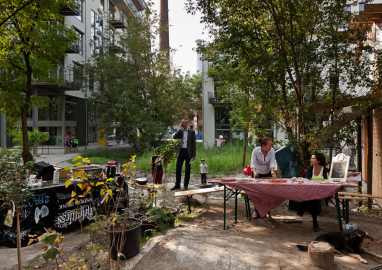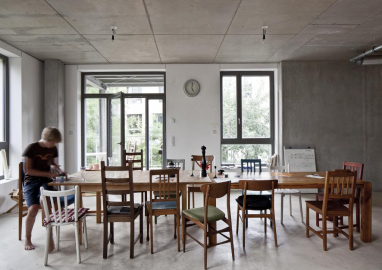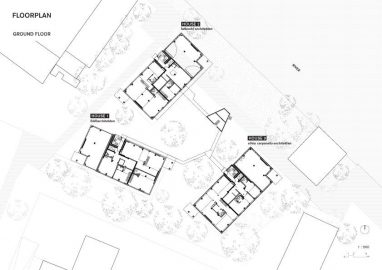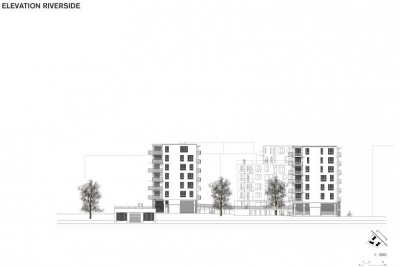Coop-Housing-Project at the River Spree
Spreefeld Berlin___
___is a jointly developed and administered project building upon experience gained from many previous self-made projects.
Its mission: to harness its locations unique potential to create a socially just, economically stable, and environmentally responsible urban building block.
- Open to the neighborhood and city - Differentiation between private, communal, public spaces
- Options for contemporary forms of living
- Resource-saving, low-cost building
- Modular building design and construction - Uniform fittings, sparingly used in the apartments
- Self-help construction - Use-neutral building organization for living and working
- Self-production of renewable energy - Economy of space: few elevators; shared and communal spaces
- Joint ownership for long-term affordable rents.
These were the significant objectives in 2008___
___Now we can summarize the characteristics of the project:
Three buildings form a confident and distinct unity in their design and position in the urban space. Open to the river and the neighbors, they do not set themselves off like blocks. The individual and communal terraces have become a distinguishing feature; they offer a much-used compensation for the loss of open spaces to the public. The building design consists of predominantly simple support and construction systems that enable a rich variety of options for the organization of various uses. In this way, no two of the 64 apartment dwellings are alike, although they all follow the same principles.
Particular care was taken to use only environmentally compatible building materials; the use of wood was reasonably maximized (wood panel exterior wall, wood wool insulation, solid wood balconies).
The buildings comply with the Passive-House-Standard and produce their own regenerative energy through a cogeneration-unit, a geo-thermal-system and photovoltaics.
In addition to conventional units there are six cluster apartments that provide a communal living structure for groups of 4 to 21 people. The residential population is quite diverse. It is multigenerational and multicultural, made possible by people both with and without money. Apartments are barrier-free; there is communal use of laundry rooms, fitness rooms, guest rooms, rooftop terraces, and the music and youth room.
The ground floor is largely open to the public, reflecting its attitude to the urban environment. It includes a carpentry workshop, catering kitchen, studios, daycare center, and a coworking space. Available to non-residents are Option Rooms - unassigned, unfinished spaces for community, social, or cultural projects. Option Rooms maintain the projects open character at the juncture of living and urban development.
The ambitious budget helped to focus on the essentials.
In exchange for the required equity capital, users could carry out needed construction work within their dwellings on-their-own. In this way, and also in showing solidarity by providing the necessary credit collateral, the project allowed the participation of people with very little capital. Rents are staggered and start at a level on par with government subsidized housing, without having received this subsidy.
This has helped many of the Spreefeld residents, who could not otherwise afford to live in the city center under todays conditions.
Just as it was defined and administered from the start, participation has focused on collective concerns, uses, and spaces.
The social skills that have developed throughout this process both enrich and facilitate a cooperative way of living.
The objectives have been implemented for the most part, and the project generates income in the form of value in its use for both residents and the city. It produces new insights and has become part of the debate, allowing more people to have a say than just the experts.
Lot-size: 7.400 m² (of that, 4.500 m² building area)
Gross external area: 10.000 m²
Main effective area: 8.000 m²


